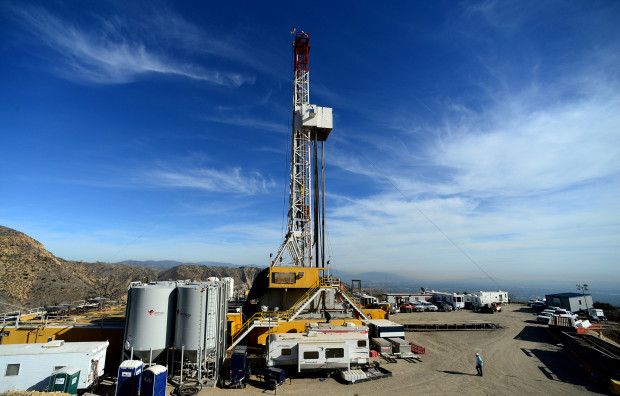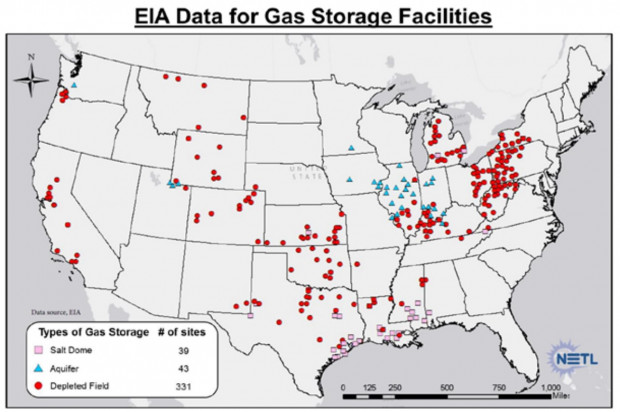Federal task force recommends safety upgrades for gas storage facilities
-
Marie Cusick

Dean Musgrove/Los Angeles Daily News via AP, Pool, File
In this Dec. 9, 2015, file photo, crews work on stopping a gas leak at a relief well at the Aliso Canyon facility above the Porter Ranch area of Los Angeles. Pool, File
A federal task force has issued new safety recommendations for gas storage facilities, following the largest methane leak in U.S. history.
The report released Tuesday comes in the wake of the massive leak at the Aliso Canyon storage field in Los Angles County, California, which sent more than 90,000 metric tons of methane into the atmosphere uncontrollably for nearly four months starting in October 2015, until it was finally sealed in February.
The incident made national news after the leak sickened residents and caused thousands of people to evacuate their homes.
“No community should have to go through something like the Aliso Canyon leak again,” says U.S. Energy Secretary Ernest Moniz, in the report. “It is up to industry to implement these recommendations in a timely fashion, while State and Federal officials develop regulations that enhance the safety of underground storage facilities in the United States.”
Overall the report makes 44 recommendations (summarized here). Key points include:
- Gas storage operators should begin a rigorous evaluation program to baseline the status of their wells, establish risk management planning and, in most cases, phase-out old wells with single-point-offailure designs.
- Advance preparation for possible natural gas leaks and coordinated emergency response in the case of a leak can help manage and mitigate potential health and environmental impacts of leaks when they do occur.
- Power system planners and operators need to better understand the risks that potential gas storage disruptions create for the electric system.
Nationwide, there are more than 400 underground natural gas storage wells, and about 80 percent of them were completed before the 1970s.
“They have been exposed to decades of physical and mechanical stresses and pre-date many current materials and technology standards,” the task force writes. “In addition, many of these wells were converted to gas storage from oil production and may not have piping designed for the higher overall operating pressures of natural gas.”
Pennsylvania has 60 underground natural gas storage fields in 26 counties, according to data from the state Department of Environmental Protection. Pennsylvania is also one of only three states with regulations addressing well integrity at all three stages– from initial construction, to use, and plugging and abandonment.
“Maintaining the integrity of the wells across the three stages of their lifespans… is of critical importance for mitigating risk of leakage,” says the report.
These recommendations will inform the pending rule-making on gas storage facilities from the Pipeline and Hazardous Material Safety Administration (PHMSA) which is part of the U.S. Department of Transportation. PHMSA’s staff of only a few hundred people is responsible for the safety of the nation’s more than 2.5 million miles of pipelines. The administration had not used its regulatory authority to oversee gas storage facilities, until the Aliso Canyon leak prompted pressure from lawmakers, who urged it to create standards.
PHMSA says it plans to issue interim regulations in “the coming months.”

















